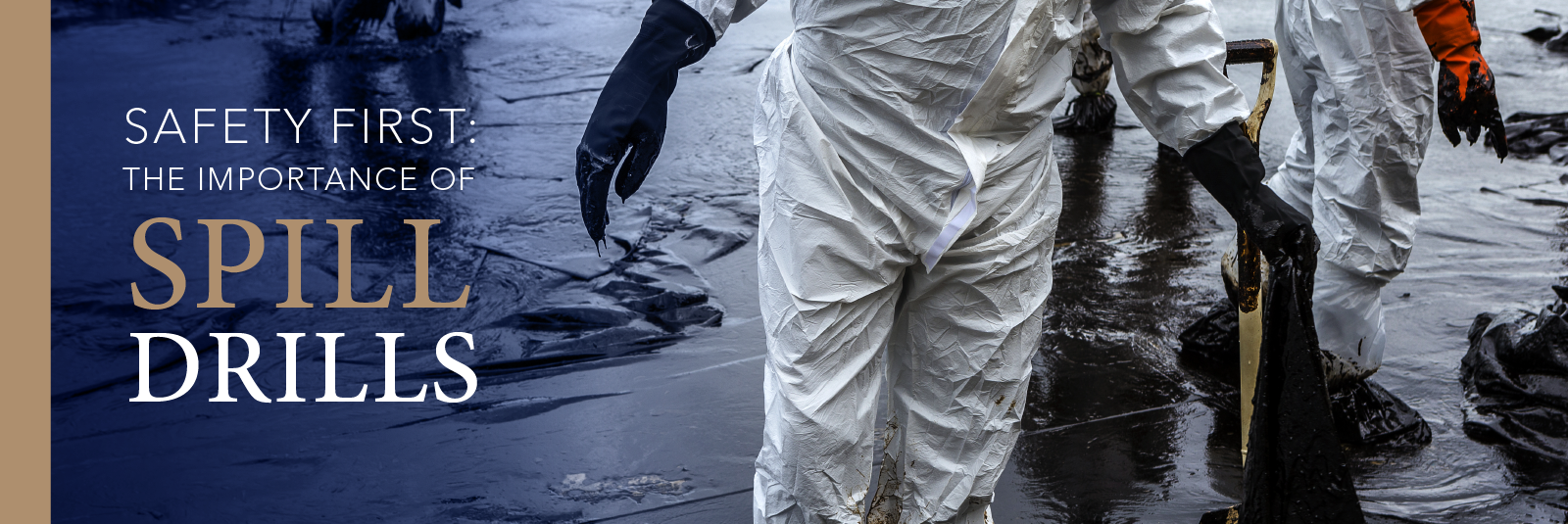The old adage of “safety first” is more true now than ever, particularly in the marine industry. While you can’t always control accidents from happening, you can control how you respond to them. The more prepared you are for dealing with different incidents, the less detrimental and harmful they may be when they do occur.
In light of this and the sharp increase in marine traffic, regulatory agencies are now requiring vessel owners and operators to run response drills and exercises that test the efficiency and safety of operations, as well as emergency response capabilities.
This framework, known as the National Preparedness for Response Exercise Program (PREP), tests contingency plans and outlines the minimum expectations for adequate response preparedness.
In our guide below, we’ll explain more about PREP and the importance of spill drills in the marine community.
What is National Preparedness for Response Exercise Program (PREP)?
Before diving into PREP, we first need to address the Oil Pollution Act of 1990 (OPA 90). This legislation focused on oil spill prevention, preparedness, and response regulations and provided new requirements for contingency planning. However, the OPA left things open-ended, as it did not define any specific criteria for compliance.
So, that’s where PREP came into play. It created guidelines that meet the objectives outlined in OPA 90. Essentially, PREP determined a compliant exercise program, or spill drills, to follow when testing and improving preparedness and response plans.
What is a Spill Drill?
Spill drills are training exercises that involve running through the actions you would take when responding to an emergency like an oil spill. These drills look at various elements, from properly training response personnel to testing response equipment. It even includes researching and developing response technology. These drills help find holes or gaps in any procedures and identify areas of improvement.
Heidi Danos of Forefront Emergency Management is an expert on these spill drills and says, “Annual drills and exercises are regulatory requirements for certain maritime and other industry sectors. If carefully planned, these exercises allow a company the ability to assess and test written emergency response procedures and Incident Management Team personnel to ensure proficiency keeping safety first.”
Why are Spill Drills Important?
Even if spills drills weren’t mandatory, they would still be critically important and offer significant benefits to vessel owners and operators.
Danos says, “As with the sports analogy, ‘We play like we practice.’ Exercises allow practice of Incident Management Team (IMT) personnel responsibilities along with a test implementation of the emergency response playbook, which is the company’s government-approved response plan. A thorough exercise will identify areas that went well along with procedural and/or personnel improvements for implementation.”
In the event of an actual incident, the lessons learned from these drills and the experience gained by practicing these exercises can minimize—or even eliminate—negative impacts and consequences.
What are the Requirements?
The U.S. Coast Guard, the Environmental Protection Agency, the Pipeline Hazardous Material Safety Administration, and the Bureau of Safety and Environmental Enforcement all have established federal exercise requirements that must be met by vessel owners and operators. Specific requirements for spill drills vary but typically include:
- Qualified individual responsibilities
- Emergency phase vs. planning phase operations (and when to make the transition)
- Incident Command System (ICS) as it pertains to your company’s requirements and the planning phase
- Walk throughs based on the vessel geographic operating area and type of cargo
- Deficiency and mitigation opportunities
- A documented record of the event to prove compliance
Even if spills drills weren’t mandatory, they would still be critically important and offer significant benefits to vessel owners and operators. Danos also says: “As with the sports analogy, ‘We play like we practice.’ Exercises allow practice of Incident Management Team (IMT) personnel responsibilities along with a test implementation of the emergency response playbook, which is the company’s government approved response plan. A thorough exercise will identify areas that went well along with procedural and/or personnel improvements for implementation.”
In the event of an actual incident, the lessons learned from these drills and the experience gained by practicing these exercises can minimize—or even eliminate—negative impacts and consequences.
Practice makes perfect, and in today’s ever-changing world of regulations, it’s important to drill and prepare for any situation, in addition to getting to know your partners before a crisis hits. Safe Harbor has the largest spill management network in the industry, and our network of experts are constantly drilling with the local, state, and federal authorities and are ready to handle any emergency. Learn more about proactive spill prevention with Safe Harbor.




